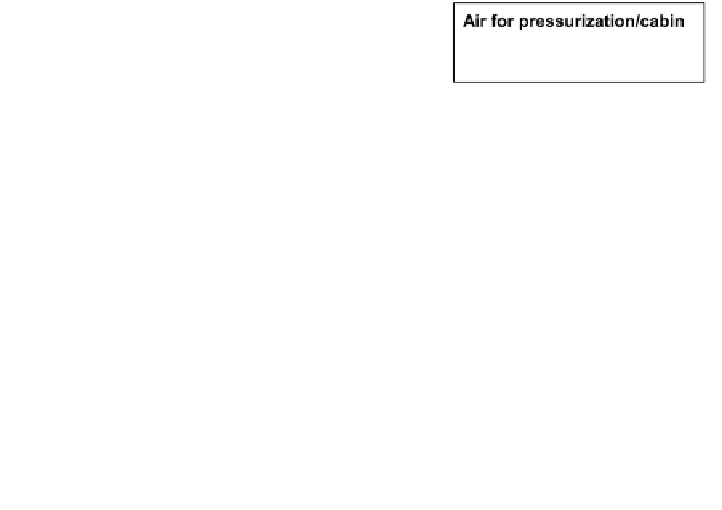Environmental Engineering Reference
In-Depth Information
Source:
Birch, 2000
Figure 10.8
The More Electric Engine
providing weight savings. Future development could also include removing the need
for lubrication through the installation of magnetic bearings.
If the MEE were combined with the More Electric Aircraft (MEA), shown in
Figure 10.9, further savings could be made. Potentially, the electricity generated by
the engine could eliminate, or at least reduce, the pneumatic and hydraulic aircraft
systems. Control actuation and wing anti-icing are also candidates for the use of
engine-generated electricity. These technological advances could lead to a more effi-
cient aircraft with reduced fuel consumption during flight and ground-based opera-
tions.
Alternative fuels
Jet-fuel composition is tightly controlled, which ensures that exhaust emissions are
constant. The one exception to this is sulphur. The effect of removing sulphur entirely
from jet fuel would be a small increase in CO
2
emissions resulting from the increased
hydrogen required during the refining process, and a possible consequence for the
lubrication of fuel pumps.
The introduction of a new fuel type raises many issues, from airport infrastruc-
ture changes to compatibility with materials in existing engines and fuel systems.
Nevertheless, many alternatives to fossil-derived kerosene have been considered, includ-
ing alcohols, methane, hydrogen and, more recently, fuels derived from vegetable oils
such as soybean or rapeseed and other biomass-derived fuel. Many of these alterna-
tives have been discounted for technical reasons and, currently, only two options
appear to have any potential.





























































































